Baq-e Neshat Bathhouse in Lar, Iran
Baq-e Neshat Bathhouse, located in the heart of Lar city in Fars province, is one of the region’s most stunning historical landmarks.
This beautiful garden and bathhouse, listed as a national heritage site in Iran, draws tourists from around the world with its remarkable architecture. Surrounded by a variety of trees, including palms and plane trees, the bathhouse creates a unique and charming atmosphere. The garden itself adds a distinct touch of beauty and serenity to the structure.
Once part of a grand palace used by the local ruler during the Safavid era, the building now stands as a testament to the region’s rich history. If you’re on one of our Shiraz tours and want to explore Baq-e Neshat Bathhouse, this blog will provide everything you need to know about this landmark, including its history, architectural features, and the best ways to explore it.
About Baq-e Neshat Bathhouse
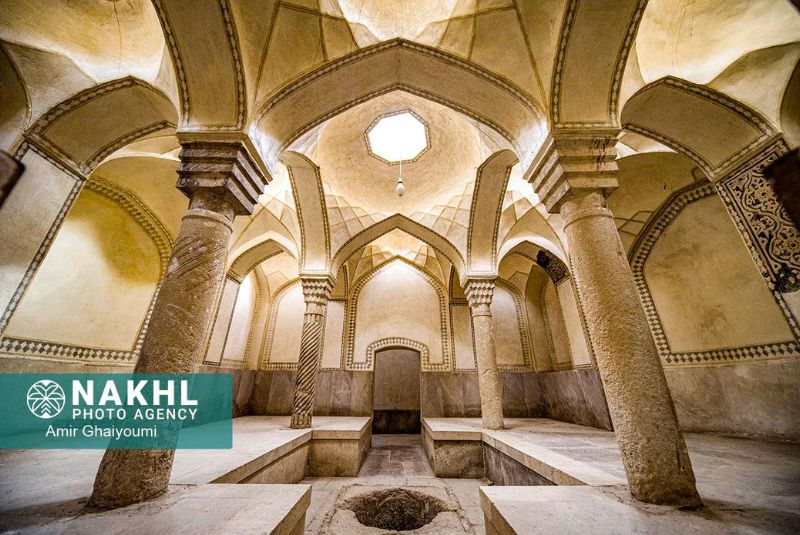
Baq-e Neshat Bathhouse is one of the must-see attractions in Fars Province, Iran. The garden covers an area of approximately one hectare and features several distinct buildings.
At the heart of the garden is a stunning three-story structure, which includes a basement, ground floor, and first floor. In recent years, the basement has been used as a traditional wrestling space (Zoorkhaneh).
Baq-e Neshat Bathhouse was officially registered as a national heritage site in Iran on August 8, 2003, reflecting its historical and cultural significance. This charming and well-preserved site offers a unique glimpse into the past, showcasing architectural beauty and rich traditions.
History of Baq-e Neshat Bathhouse
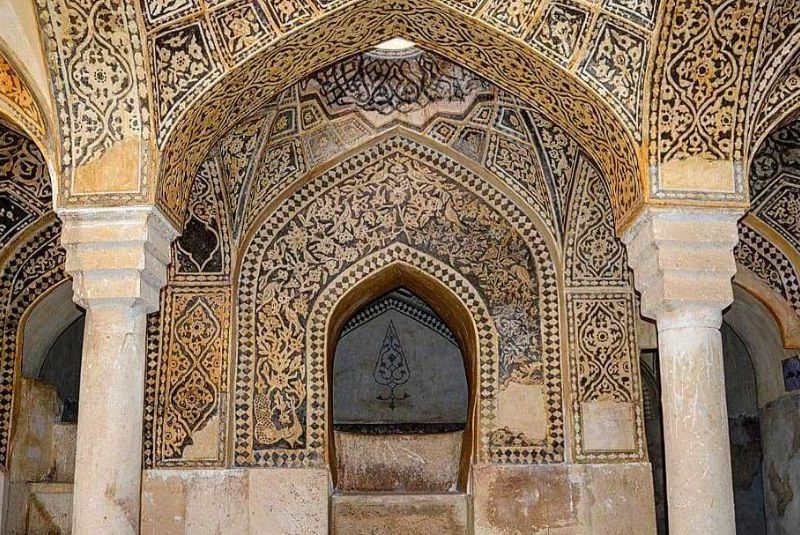
Laar, a lesser-known city in the southeast of Fars Province, Iran, was once a vast region in southern Iran. Many Iranians from the Gulf Sheikhdoms migrated here in ancient times.
During the Safavid era, Laar held significant importance due to its location on the trade route from Isfahan to the Persian Gulf. The city had semi-autonomous governance under the Safavids, and its ruler controlled the area from a beautiful mansion known as Baq-e Neshat. This garden and mansion served as the political center of Laar during the Safavid period.
After the establishment of Baq-e Neshat and its mansion in the Safavid era, various additions were made to the complex throughout the Qajar period. One such addition is attributed to the reign of Nader Shah Afshar, who played an influential role in shaping the garden’s layout.
Over time, the historic building has undergone significant changes. Unfortunately, the second floor and the wind tower (badgir) were completely destroyed. Other sections of the building, due to wear and tear, require preservation and maintenance to protect their cultural and historical value.
Architecture of Baq-e Neshat Bathhouse
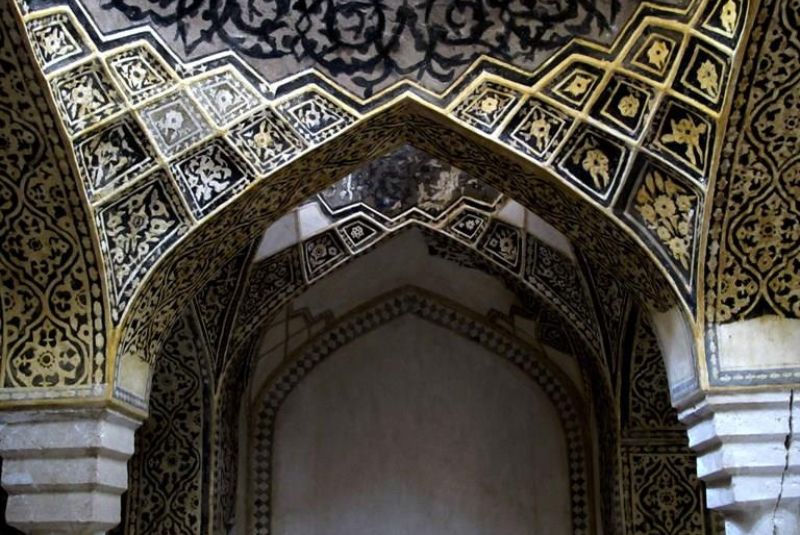
Baq-e Neshat is a rectangular garden, measuring 135 meters by 35 meters. The mansion within the garden features a striking and tall veranda, almost 2.5 meters high. Wooden doors can be found on both sides of the veranda. In front of the building is a polygonal stone pool, connected to stone channels that flow through the garden.
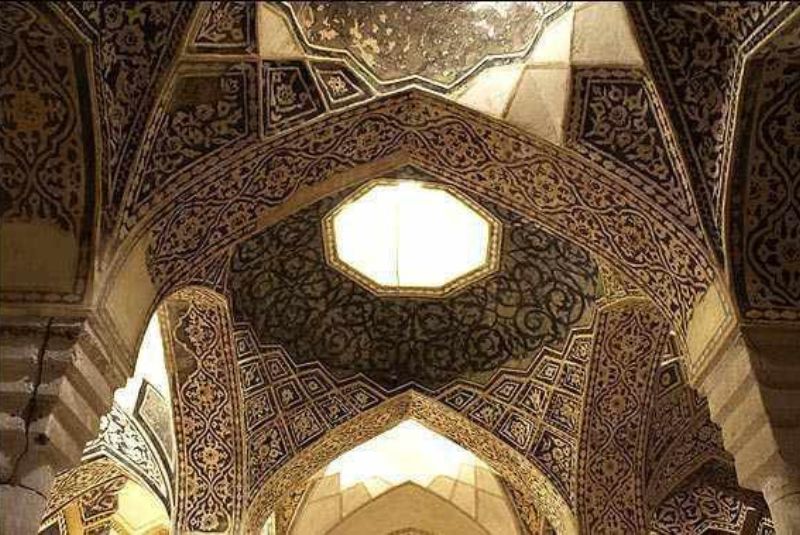
At the center of the mansion’s reception hall is an octagonal opening, designed for light and ventilation for the basement below. The complex also includes beautiful stucco work, delicate muqarnas (stalactite decoration), and octagonal pools amidst the palm groves. The bathhouse and the heated rooms add to the architectural charm of the site.
One of the most remarkable aspects of the Baq-e Neshat mansion is its symmetrical design, where all parts of the building are constructed to be perfectly mirrored, reflecting the elegance and balance of Persian architecture.
Different Sections of Baq-e Neshat Bathhouse

The Baq-e Neshat Bathhouse, located in the northern section of the Baq-e Neshat complex, likely shares its construction period with the main mansion. A stone inscription on the bathhouse’s dressing room dates back to 1305, which coincides with the later years of the reign of Nasser al-Din Shah Qajar.
This bathhouse is known for its impressive architecture, including a vaulted ceiling, spiral stone columns, and beautiful lime plasterwork. The roof of the bathhouse has skylights designed to allow natural light to illuminate the space from dawn to dusk while preventing the entry of cold air and the escape of warm air.
Entrance
The entrance of the bathhouse was designed in a labyrinthine manner to prevent cold air from entering the changing room (Bineh). The main entrance, which was added in recent decades, is now closed, and the bathhouse is accessed through the garden. The entrance was built with careful consideration to maintain warmth inside the bathhouse.
Bineh (Dressing Room)
The Bineh, or changing room, serves as the space before and after bathing. A modest-sized pool is located in the center of this room, functioning both as a fountain and a place for cold water rinsing. Following the advice of Sheikh Baha’i, the pool was believed to help prevent colds and respiratory issues, much like other traditional bathhouses in Iran.
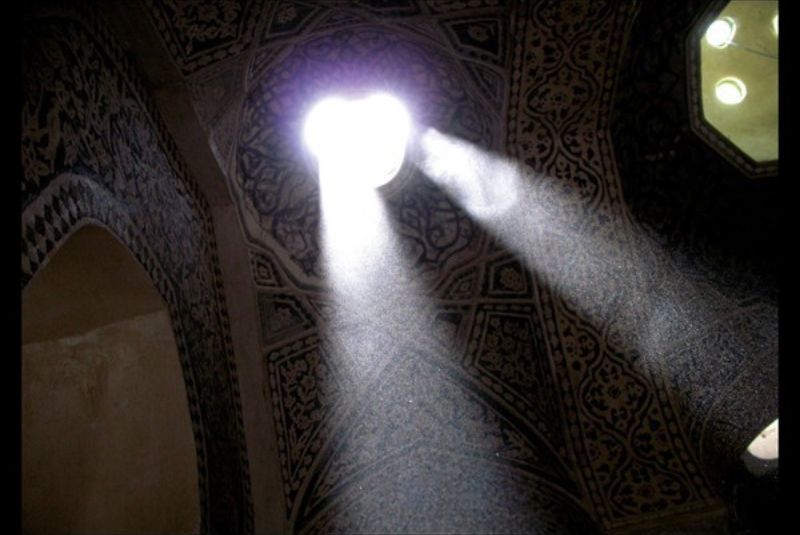
Miandar (Hallway)
The Miandar, also known as the Serkhan, is a twisting passageway that connects the Bineh and the main hot room (Garmkhaneh). It features two small pools built into the walls, which were supplied with water from the hot water cistern. The purpose of this section was to trap steam from the two pools, which acted as a barrier against the entry of cold air from the Bineh into the Garmkhaneh.
Hot Water Cisterns
The Miandar connects to the main hot room through two cisterns:
- Hot Water Cistern: This cistern used a copper cauldron to transfer the heat from boiling water into the surrounding water, which was then used for bathing. Unfortunately, the cauldron is no longer present, but it was once heated by a furnace located behind the bathhouse.
- Cold Water Cistern: A smaller cistern used for storing cold water, necessary for the cooling of the bath.
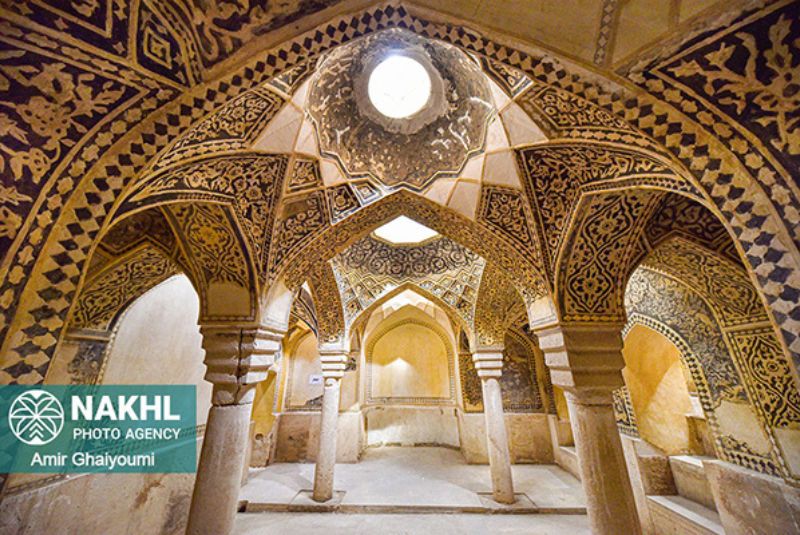
Main Garmkhaneh (Hot Room)
The Garmkhaneh features a vaulted ceiling with skylights, four twisting columns, and arches in the shape of seven and five-pointed stars, which distribute the weight of the roof. The walls are adorned with beautiful lime plasterwork, adding to the aesthetic appeal of the room.
The floor of the Garmkhaneh contains winding tunnels, known as "Gorbero," through which hot water flows from the cistern, helping to heat the floor and maintain thermal balance.
These tunnels were used for the circulation of warm water and the removal of waste water from the cisterns. There is also a separate area within the Garmkhaneh, located deeper beneath the main level, used for activities such as applying henna or other hygienic treatments.
Location of Baq-e Neshat Bathhouse
Baq-e Neshat Bathhouse is located in the city of Lar, in the Larestan County of Fars Province, southern Iran. It sits along the scenic shoreline of the city, specifically on Northern Hemmat Street, making it easily accessible for visitors.
The bathhouse is situated on the northern side of the historic Abbasi Bridge, beside the dry riverbed in a lush and picturesque setting, offering a tranquil escape from the bustling city life.
How to Get There
To reach Baq-e Neshat Bathhouse, head toward the coastal street of Lar city and continue onto Hemmat North Street. The entrance to the garden and bathhouse is located at the beginning of this street. The bathhouse is conveniently located near key attractions such as the Lar Museum and the Qaisarieh Bazaar, making it an easy stop when exploring the area.
Tourist Attractions Nearby
Dragon-Shaped Castle (Qaleh-e Azdahapeykar)
Located in the city of Lar, in the southern part of Fars Province, the Dragon-Shaped Castle is an ancient site dating back to the Sassanian era. This historic castle is perched on a hill in the city of Lar.
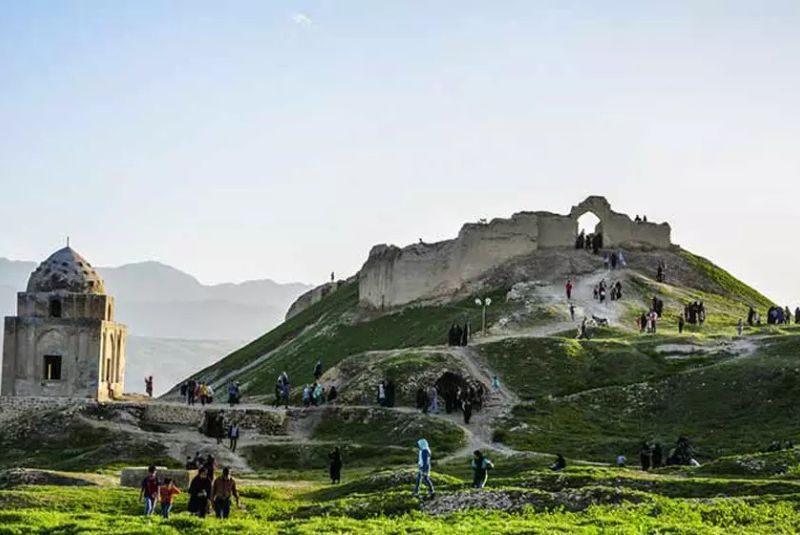
Unfortunately, over recent years, the castle has fallen into disrepair due to the lack of a caretaker or fencing, leading to its misuse as a gathering place for drug users. Despite this, the castle still offers an impressive glimpse into the region’s historical past. The unique dragon-shaped design of the castle is a fascinating architectural feature, making it a notable landmark in the area.
Nader Shah's Mother’s Tomb (Naneh Nader Tomb)
Another historical site near Baq-e Neshat Bathhouse is the Nader Shah's Mother's Tomb (Naneh Nader). Situated on South Modarres Street in Lar, this tower-like structure is one of the region's key attractions. Standing 9 meters tall, it has a steep slope, and while it’s often associated with Nader Shah, it was neither built during the Afsharid dynasty nor is it actually connected to his mother.

The tomb is part of a larger historical context, and its fascinating architecture draws the attention of visitors to the city. The Nader Shah's Mother's Tomb is located near the Dragon-Shaped Castle, making it easy for travelers to explore both sites in the same visit.
Visiting Tips for Baq-e Neshat Bathhouse
Baq-e Neshat Bathhouse is open to visitors from Saturday to Thursday, between 9 AM and 5 PM. The site offers a restaurant and buffet for tourists, allowing visitors to relax and enjoy some refreshments during their visit.
The bathhouse is easily accessible by both private car and public transportation, including taxis and buses, making it convenient for tourists to reach. While visiting this beautiful historical site, please remember to keep the environment clean and refrain from littering in the garden.
Bottom Line
Baq-e Neshat Bathhouse, located in the heart of Lar city in Fars province, is a must-see historical gem. With its stunning architecture, including intricate stucco work, spiral columns, and serene garden surroundings, the bathhouse offers a glimpse into the grandeur of Safavid-era design.
As a national heritage site, it reflects the region’s rich history and cultural heritage. Visitors can explore the well-preserved bathhouse, its sections including the changing room, steam hall, and hot rooms, all designed with remarkable attention to comfort and aesthetics. The site is easily accessible and offers amenities like a restaurant and buffet for tourists.
Share your story!
Comment below and let us know about your Experience.
Your story inspires others!


Comment
Leave a Comment